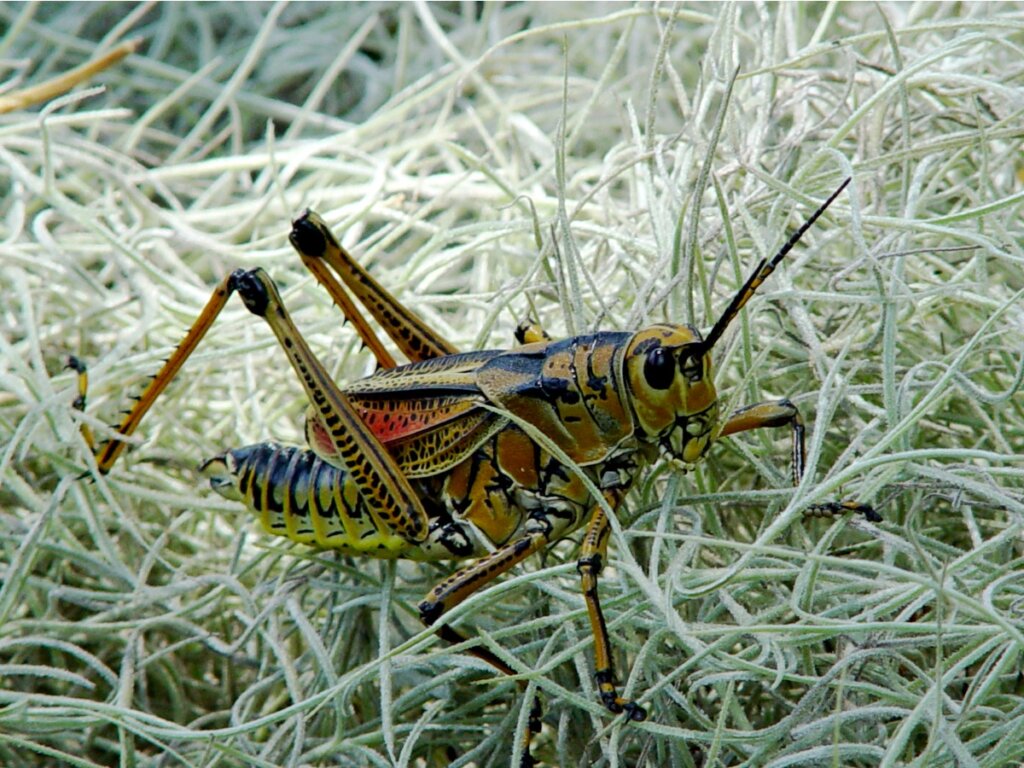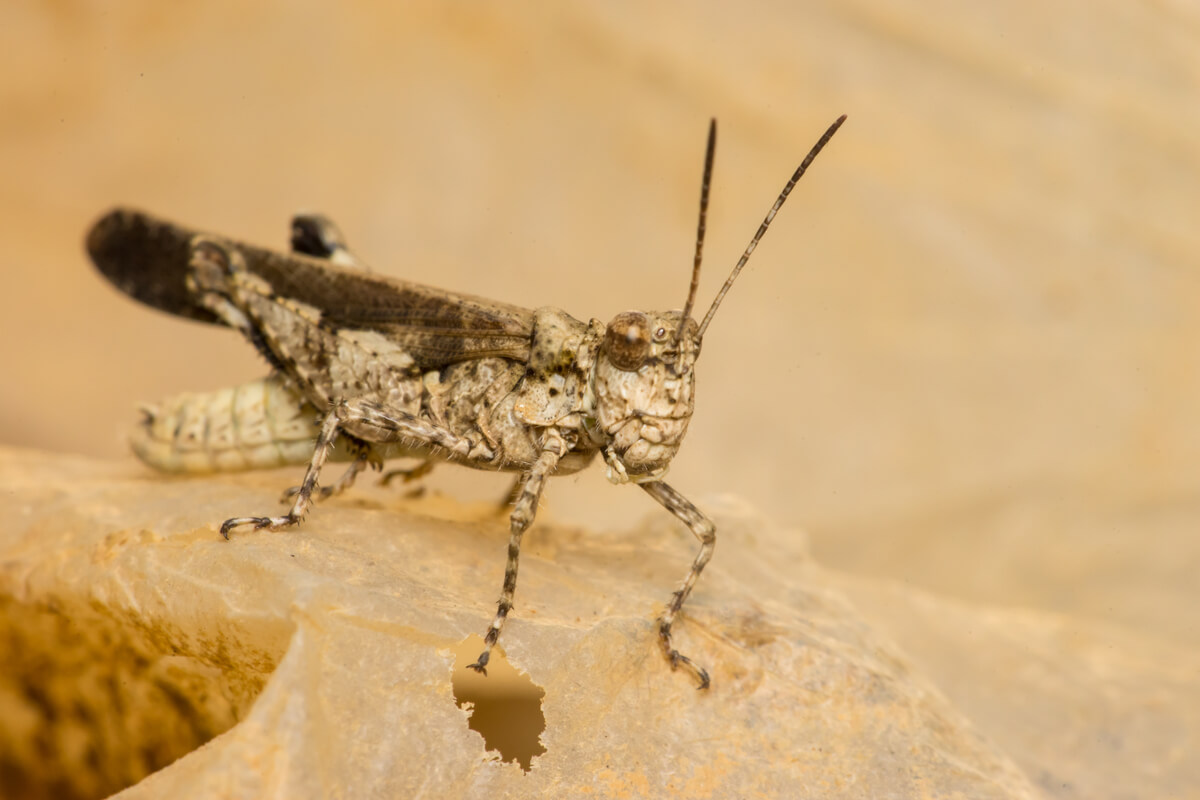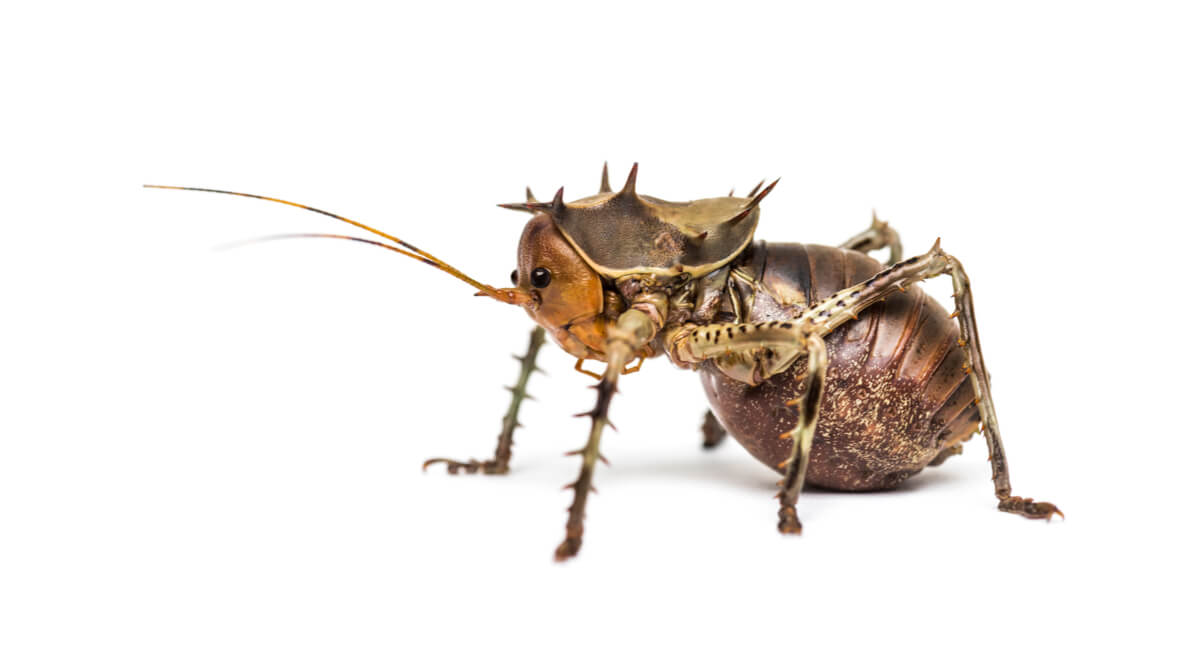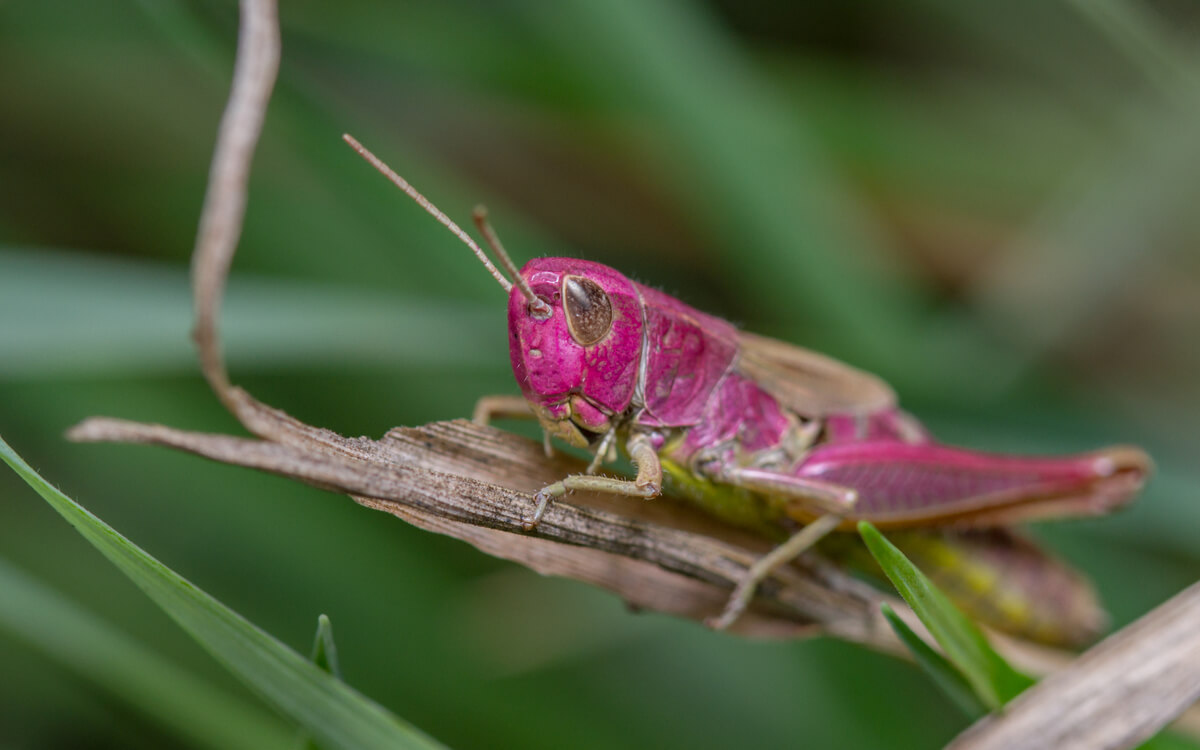10 Curiosities About Grasshoppers

There are many curiosities about grasshoppers, because these beautiful insects have been jumping and flying through the meadows and jungles of the tropical and temperate regions of the world for centuries. However, beyond their characteristic jumps and their general greenish tone, there are many facts that we’re sure you don’t know about these fascinating insects!
As always in nature, there are exceptions to the general rules imposed by natural selection. Did you know that there are relatives of carnivorous grasshoppers? Did you know that some of these insects have mutations that make them pink? If you want to know more about this fascinating group of invertebrates, read on.
1. There are many species of grasshoppers!
Although, when thinking of the word “grasshopper”, a species of winged green cricket comes to mind, the reality is that this group has an impressive diversity in terms of morphology. Specifically, this conglomerate of insects is located in the suborder Caelifera, and comprises more than 2,400 genera and 12,000 species. Incredible!
All grasshoppers belong to the Orthoptera category or higher order, which also includes locusts and crickets. It’s estimated that there are more than 20,000 species of Orthoptera around the world, not counting those that remain undescribed in the mysterious rainforests.
At a taxonomic level, more than 12,000 species of Orthoptera are considered grasshoppers.
2. They have a common body
Like any insect, the body of grasshoppers is divided into 3 sections: head, thorax, and abdomen. The head is verticalized and houses the oral apparatus in its lower part, in addition to having multiple sensory organs (compound eyes, simple eyes and antennae). The jaws have sensory palps that help the animal to recognize its food.
The thorax and abdomen are protected by a series of cuticle-covered segments, which make up the exoskeleton of the invertebrate. Three pairs of legs emerge from the thoracic region, the hind legs being much more powerful than the rest. The femur and tibia of these latter extremities have been evolutionarily refined for locomotion by saltation.

3. They live in warm environments
Grasshoppers are herbivores, and, as such, must exploit ecosystem niches filled with ever-growing plant matter. For this reason, they’re especially distributed in the tropical areas of the planet, being much more scarce in temperate ecosystems. Interestingly, according to studies, many species prefer farmland over natural forests.
The presence of grasshoppers in an ecosystem is directly linked to the number of plant species on which they can feed.
4. Incredible jumpers!
One of the most striking curiosities of grasshoppers is that they’re capable of jumping very long distances with respect to their size. This is thanks to the morphological modifications that we’ve already mentioned. Some species are capable of traveling more than 70 centimeters ( 28 inches) with a single jump. If we applied that to our species, that would be the equivalent of a human clearing an entire soccer field in one jump!
Grasshoppers use this method of locomotion for various reasons: to flee from their predators, to start to fly easily, or to travel long distances between plants to feed themselves. These insects perform the act in three different and very complex phases, in which their exoskeleton, their external anatomy, and their powerful muscles play essential roles.
5. Locusts and grasshoppers are very close relatives
Another curiosity about grasshoppers is that locusts belong to the same group as them, since they are both members of the Caelifera family. In any case, locusts stand out for being larger and for having migratory behavior. They’re usually solitary orthopterans, but, at certain times of the year, they create swarms that destroy everything in their path. Take a look at the video below!
This change to frenzy mode is made, in part, by variations in the concentration of serotonin in these animals.
6. They’re hemimetabolic insects
Grasshoppers are hemimetabolic insects, which means that they have an incomplete metamorphosis. This mode of development includes 3 very different vital phases: egg, nymph and adult or imago stage. The change is made gradually and there’s no pupal stage, as is the case with beetles or butterflies, for example.
Despite not having a pupal stage, they do have to undergo a series of exoskeleton changes to grow into adulthood. We know this process as molting or ecdysis and is a very delicate time for grasshoppers, especially the first few hours afterwards.
7. Some species are pests
Grasshoppers are herbivorous animals and feed exclusively on plant matter. They’re necessary for the maintenance of ecosystems. Why? Because they transform the leaves of plants into living tissue (their own body) that can then be consumed by birds, amphibians, reptiles, mammals, birds and other predatory insects.
Unfortunately, this ability to consume plants at a breakneck rate has made several species a headache for the world’s farmers. As studies indicate, Orthoptera are true pests of corn crops and generate measurable annual losses.
8. Some relatives of grasshoppers aren’t so friendly
This isn’t one of our curiosities about grasshoppers as such, but rather their close relatives, the Tettigoniidae. Not all members of this group are bloodthirsty, but some of them (such as Acanthoplus discoidalis) have sharp jaws capable of tearing open bird’s eggs and killing their young.
Other even larger and more aggressive species can even prey on small vertebrates, such as lizards and snakes. It goes without saying that the bite of the predatory Tettigoniidae is, to say the least, painful.

9. There are pink grasshoppers!
Pink grasshoppers are examples of Erythrism in the animal kingdom. These incredible insects have mutations in their genes, which give them a very different color from normal members of their species. Being pink in a world of green vegetables is complex, and the survival rate of these invertebrates is much lower.

10. These animals deserve respect
Many people perceive grasshoppers as annoying and unpleasant insects, as they eat crops and can become a pest. However, these animals are a basic part of any ecosystem: they use plant matter and serve as food for many species. Getting rid of them for financial interest is never an option.
We hope you’ve enjoyed learning about these curiosities about grasshoppers – here’s another interesting article on the same topic:
All cited sources were thoroughly reviewed by our team to ensure their quality, reliability, currency, and validity. The bibliography of this article was considered reliable and of academic or scientific accuracy.
- Gage, S. H., & Mukerji, M. K. (1977). A perspective of grasshopper population distribution in Saskatchewan and interrelationship with weather. Environmental Entomology, 6(3), 469-479.
- MARIÑO‐PÉREZ, R. I. C. A. R. D. O., & Song, H. (2018). Phylogeny of the grasshopper family P yrgomorphidae (C aelifera, O rthoptera) based on morphology. Systematic Entomology, 43(1), 90-108.
- Carstens, B. C., & Knowles, L. L. (2007). Estimating species phylogeny from gene-tree probabilities despite incomplete lineage sorting: an example from Melanoplus grasshoppers. Systematic biology, 56(3), 400-411.
